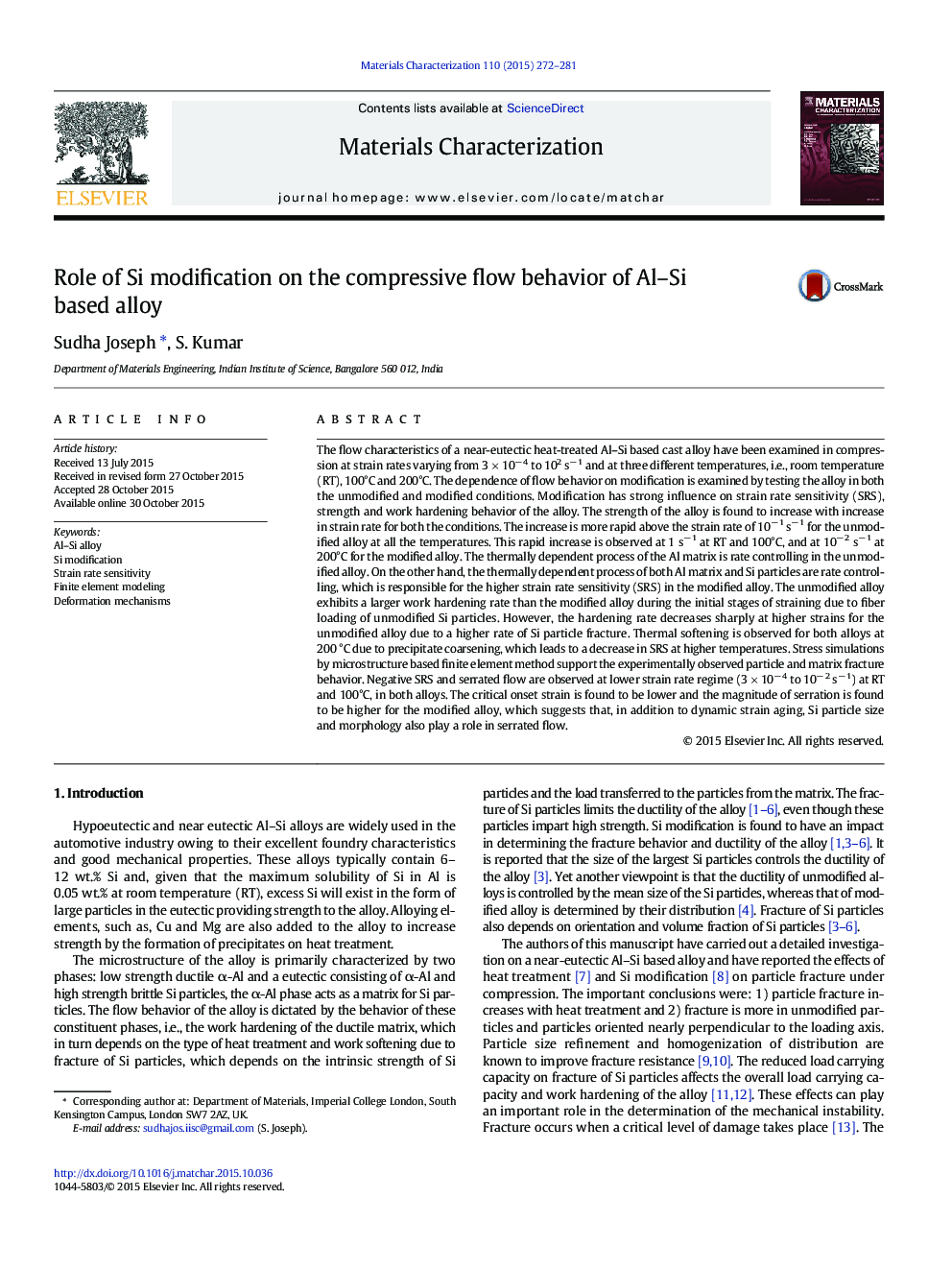| کد مقاله | کد نشریه | سال انتشار | مقاله انگلیسی | نسخه تمام متن |
|---|---|---|---|---|
| 1570711 | 1514377 | 2015 | 10 صفحه PDF | دانلود رایگان |
عنوان انگلیسی مقاله ISI
Role of Si modification on the compressive flow behavior of Al-Si based alloy
ترجمه فارسی عنوان
نقش اصلاح سی بر رفتار جریان فشاری آلومینیوم بر پایه آلومینیوم
دانلود مقاله + سفارش ترجمه
دانلود مقاله ISI انگلیسی
رایگان برای ایرانیان
کلمات کلیدی
آلومینیوم آلومینیوم، اصلاح سی، حساسیت نرخ فشار، مدل سازی عنصر محدود مکانیزم تغییر شکل
موضوعات مرتبط
مهندسی و علوم پایه
مهندسی مواد
دانش مواد (عمومی)
چکیده انگلیسی
The flow characteristics of a near-eutectic heat-treated Al-Si based cast alloy have been examined in compression at strain rates varying from 3 Ã 10â 4 to 102 sâ 1 and at three different temperatures, i.e., room temperature (RT), 100°C and 200°C. The dependence of flow behavior on modification is examined by testing the alloy in both the unmodified and modified conditions. Modification has strong influence on strain rate sensitivity (SRS), strength and work hardening behavior of the alloy. The strength of the alloy is found to increase with increase in strain rate for both the conditions. The increase is more rapid above the strain rate of 10â 1 sâ 1 for the unmodified alloy at all the temperatures. This rapid increase is observed at 1 sâ 1 at RT and 100°C, and at 10â 2 sâ 1 at 200°C for the modified alloy. The thermally dependent process of the Al matrix is rate controlling in the unmodified alloy. On the other hand, the thermally dependent process of both Al matrix and Si particles are rate controlling, which is responsible for the higher strain rate sensitivity (SRS) in the modified alloy. The unmodified alloy exhibits a larger work hardening rate than the modified alloy during the initial stages of straining due to fiber loading of unmodified Si particles. However, the hardening rate decreases sharply at higher strains for the unmodified alloy due to a higher rate of Si particle fracture. Thermal softening is observed for both alloys at 200 °C due to precipitate coarsening, which leads to a decrease in SRS at higher temperatures. Stress simulations by microstructure based finite element method support the experimentally observed particle and matrix fracture behavior. Negative SRS and serrated flow are observed at lower strain rate regime (3 Ã 10â 4 to 10â 2 sâ 1) at RT and 100°C, in both alloys. The critical onset strain is found to be lower and the magnitude of serration is found to be higher for the modified alloy, which suggests that, in addition to dynamic strain aging, Si particle size and morphology also play a role in serrated flow.
ناشر
Database: Elsevier - ScienceDirect (ساینس دایرکت)
Journal: Materials Characterization - Volume 110, December 2015, Pages 272-281
Journal: Materials Characterization - Volume 110, December 2015, Pages 272-281
نویسندگان
Sudha Joseph, S. Kumar,
